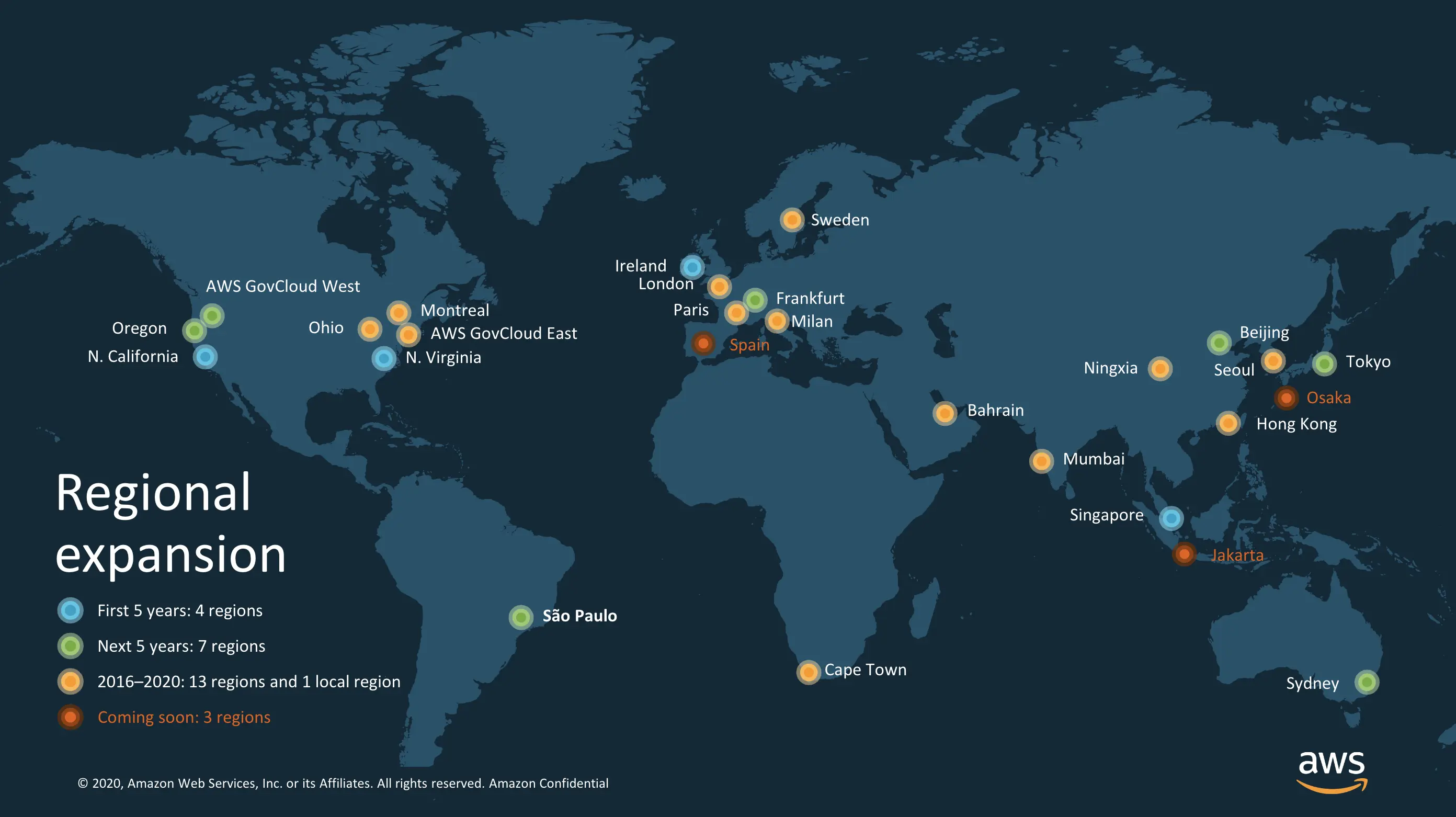Today, we’re diving into a pivotal aspect of architecting robust, resilient, and efficient applications on Amazon Web Services (AWS): understanding and leveraging AWS Regions and Availability Zones (AZs). This post not only aims to elucidate these key concepts but also to guide you through best practices and practical examples using Terraform, a popular infrastructure-as-code tool. Whether you’re a developer, a DevOps engineer, or a cloud architect, mastering these facets of AWS can significantly amplify your applications’ performance and reliability.
Unveiling AWS Regions and Availability Zones
At the heart of AWS’s global infrastructure are Regions and Availability Zones. These elements are foundational in achieving high availability, low latency, and compliance with regulatory requirements.
AWS Regions
AWS Regions are distinct geographical locations across the world, each hosting multiple isolated Availability Zones. Each Region is a separate entity, ensuring that failures in one Region don’t impact another. For businesses, selecting the right Region is crucial for minimizing latency, adhering to data sovereignty laws, and optimizing costs.
AWS Availability Zones
Each AWS Region comprises multiple Availability Zones, which are separate, isolated data centers interconnected with low-latency links. Utilizing multiple AZs in a single Region enables you to build highly available and fault-tolerant applications, as AWS guarantees that AZs are insulated from failures in other AZs.
Key Concepts and Best Practices
When architecting your AWS environment, understanding and strategically deploying across Regions and AZs is paramount. Here’s how:
- Region Selection: Choose a Region closest to your users to reduce latency. Consider data residency requirements and pricing differences across Regions.
- Multi-AZ Deployment: For critical applications, deploy across multiple AZs within a Region to ensure high availability. This strategy protects your applications from data center failures.
- Data Replication Across Regions: For global applications or disaster recovery purposes, replicate data across Regions. This ensures business continuity even in the event of a regional disruption.
- Region-Aware Services: Some AWS services are region-scoped, while others are global. Understand the scope of each service you use to architect your environment correctly.
- Monitoring and Compliance: Use AWS CloudTrail and AWS Config to monitor and ensure compliance with your architectural best practices across Regions and AZs.
Terraform Examples: Implementing Best Practices
Now, let’s put theory into practice by illustrating how to implement these concepts using Terraform, an infrastructure-as-code software tool that enables you to define both resource and infrastructure topology in code.
Example 1: Multi-AZ Deployment for High Availability
provider "aws" {
region = "us-east-1"
}
resource "aws_vpc" "main" {
cidr_block = "10.0.0.0/16"
}
resource "aws_subnet" "primary" {
vpc_id = aws_vpc.main.id
cidr_block = "10.0.1.0/24"
availability_zone = "us-east-1a"
}
resource "aws_subnet" "secondary" {
vpc_id = aws_vpc.main.id
cidr_block = "10.0.2.0/24"
availability_zone = "us-east-1b"
}
resource "aws_rds_instance" "app_db" {
engine = "mysql"
instance_class = "db.m4.large"
allocated_storage = 100
db_subnet_group_name = aws_db_subnet_group.app.name
multi_az = true
}
resource "aws_db_subnet_group" "app" {
name = "main"
subnet_ids = [aws_subnet.primary.id, aws_subnet.secondary.id]
}In this example, we deploy an RDS instance across two AZs (us-east-1a and us-east-1b) within the us-east-1 Region for high availability.
Example 2: Data Replication Across Regions
provider "aws" {
alias = "primary"
region = "us-east-1"
}
provider "aws" {
alias = "secondary"
region = "eu-west-1"
}
resource "aws_s3_bucket" "primary_bucket" {
provider = aws.primary
bucket = "my-primary-bucket"
acl = "private"
}
resource "aws_s3_bucket" "secondary_bucket" {
provider = aws.secondary
bucket = "my-secondary-bucket"
acl = "private"
versioning {
enabled = true
}
replication_configuration {
role = aws_iam_role.replication.arn
rules {
id = "replicateAll"
status = "Enabled"
destination {
bucket = aws_s3_bucket.secondary_bucket.arn
storage_class = "STANDARD"
}
}
}
}
resource "aws_iam_role" "replication" {
assume_role_policy = <<POLICY
{
"Version": "2012-10-17",
"Statement": [
{
"Effect": "Allow",
"Principal": {
"Service": "s3.amazonaws.com"
},
"Action": "sts:AssumeRole"
}
]
}
POLICY
}In this second example, we create two S3 buckets in different Regions (us-east-1 and eu-west-1) and set up cross-region replication to ensure data availability and durability across geographic locations.
Conclusion: Mastering the AWS Geographical Landscape
Understanding and strategically leveraging AWS Regions and Availability Zones is paramount for designing resilient, efficient, and compliant cloud architectures. By embracing these concepts and applying best practices, you can significantly enhance your applications’ performance, availability, and disaster recovery posture.
As we’ve seen through our Terraform examples, implementing these strategies in code not only boosts efficiency but also ensures consistency and repeatability in your deployments. So, whether you’re developing a new application or optimizing an existing one, keep Regions and AZs at the forefront of your architectural decisions.
And with that, we wrap up our deep dive into AWS Regions and Availability Zones. Embrace these insights, implement them in your AWS journey, and watch your cloud infrastructure transform into a paragon of resilience and efficiency. Here’s to your success in the cloud!
Got thoughts, questions, or insights on AWS Regions and Availability Zones? Feel free to share in the comments below. Let’s cultivate a community of knowledge and innovation! Happy cloud architecting!
